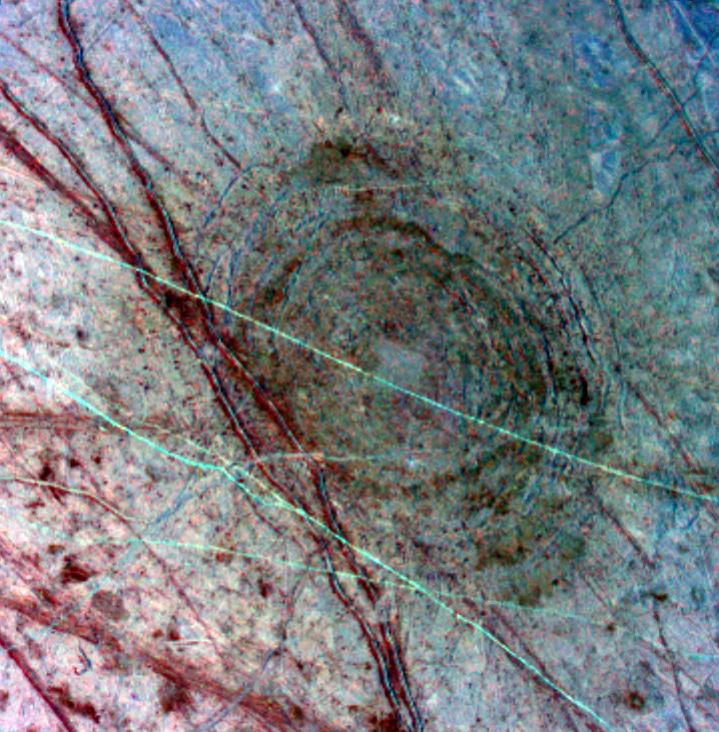All Resources
Ancient Impact Basin on Europa

This feature on Europa was seen as a dark, diffuse circular patch on a previous Galileo global image of Europa's leading hemisphere on April 3, 1997.
The "bullseye" pattern appears to be a 86-mile wide (140- kilometer wide) impact scar (about the size of the island of Hawaii) which formed as the surface fractured minutes after a mountain-sized asteroid or comet slammed into the satellite. This approximately 132-mile wide (214-kilometer wide) picture is the product of three images which have been processed in false color to enhance shapes and compositions.
North is toward the top of this picture, which is illuminated from sunlight coming from the west. This color composite reveals a sequence of events which have modified the surface of Europa. The earliest event was the impact which formed the Tyre structure at 34 degrees north latitude and 146.5 degrees west longitude. The impact was followed by the formation of the reddish lines superposed on Tyre. The red color designates areas that are probably a dirty water ice mixture. The fine blue-green lines crossing the region from west to east appear to be ridges which formed after the crater.
The images were taken on April 4, 1997, at a resolution of 1,950 feet (595 meters) per picture element and a range of 17,900 miles (29,000 kilometers). The images were taken by Galileo's solid state imaging (CCD) system.


